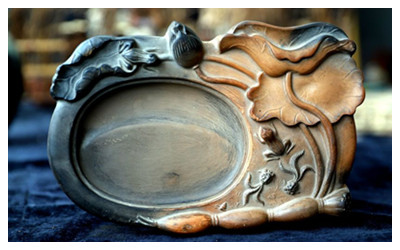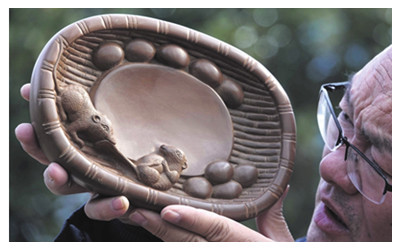Skype: neodalle-travel
Tel: +86 135 7447 2266
E-mail: sales@visitaroundchina.com
 Chengni Ink Slab is one of the top four ink slabs in China, along with Duan in Zhaoqing, Guangdong province, She in Shexian County, Anhui province and Taohe in Zhuoni county, Gansu province. Chengni Ink Slabs produced in Jiangxian county, Shanxi province, are a favorite of enthusiasts.
Chengni Ink Slab is one of the top four ink slabs in China, along with Duan in Zhaoqing, Guangdong province, She in Shexian County, Anhui province and Taohe in Zhuoni county, Gansu province. Chengni Ink Slabs produced in Jiangxian county, Shanxi province, are a favorite of enthusiasts.The "Four Treasures of Study"-a high-quality writing brush, ink stick, paper and ink slab-have been sought after by ancient scholars and today's enthusiasts of calligraphy and Chinese painting. When deciding to buy one, they can make a decision judging from its geographical indication.
 Lin Yongmao and his son Lin Tao decided to revive this ancient technique in 1986. The father and son visited many libraries to read historical documents and many museums to study exhibits.They learned that to make a chengni ink slab, they needed to master knowledge in many fields. This included chemistry, physics, painting, engraving, calligraphy and literature.
Lin Yongmao and his son Lin Tao decided to revive this ancient technique in 1986. The father and son visited many libraries to read historical documents and many museums to study exhibits.They learned that to make a chengni ink slab, they needed to master knowledge in many fields. This included chemistry, physics, painting, engraving, calligraphy and literature.  Ask Questions ?
Ask Questions ?